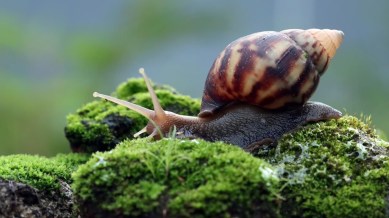📣 For more lifestyle news, click here to join our WhatsApp Channel and also follow us on Instagram
8 animals that ‘hibernate’ in the summer
While winter hibernation is widely known, summer hibernation (estivation) is just as fascinating and vital for survival in extreme environments.

When we think of hibernation, we usually picture animals sleeping through the winter to escape the harsh cold. But did you know that some animals hibernate during the summer as well?
This phenomenon, called aestivation (or estivation), is a survival strategy various species use to avoid extreme heat, drought, or food scarcity. Like winter hibernation, aestivation helps animals slow their metabolism and conserve energy until conditions improve.
This strategy becomes crucial in dry or desert regions, where water and food are scarce during summer. Some key reasons why animals aestivate include:
- Protection from extreme heat – Avoid overheating in harsh climates.
- Water conservation – Reduce dehydration risks in dry environments.
- Food scarcity – Avoid starvation when food sources become scarce.
- Energy preservation – Minimise movement to save energy during tough seasons.
8 animals that aestivate in the summer
1. African Lungfish
One of the most famous aestivators, the African lungfish, survives extreme droughts by burying itself in mud and secreting a protective mucus cocoon. It can remain in this state for up to four years until rains return and refill the water bodies.
2. Desert Tortoise
Native to North America’s arid regions, the desert tortoise aestivates to escape the scorching desert heat. It digs burrows and remains inactive until the cooler months arrive, conserving water and energy.
3. Snails
Many species of land snails, including the Roman snail, aestivate by sealing themselves inside their shells with a mucus layer to prevent water loss. This helps them survive dry summers in Mediterranean and desert climates.
4. Crocodiles
Some crocodile species, like the Australian freshwater crocodile, aestivate by digging into riverbanks or burrowing in mud when water sources dry up. They remain inactive until the rainy season replenishes their habitat.
5. Salamanders
Certain amphibians, like the spotted salamander, aestivate when ponds or streams dry out. They burrow underground and stay dormant until conditions become favorable again.
6. Frogs (Like the Couch’s Spadefoot Toad)
Frogs, especially those living in desert regions, aestivate to survive long dry periods. The Couch’s spadefoot toad buries itself in the soil and remains dormant for months until rain triggers its reawakening.
7. Hedgehogs (Certain Species)
While most hedgehogs hibernate in winter, some species aestivate in extremely hot regions to avoid dehydration and heat stress.
8. Earthworms
Even earthworms aestivate when soil becomes too dry. They burrow deeper into the ground, wrapping themselves in a protective mucus layer to retain moisture.
How aestivation differs from hibernation
While both hibernation and estivation involve a state of dormancy, they occur in different seasons and for different reasons:
| Feature | Hibernation | Estivation |
|---|---|---|
| Season | Winter | Summer |
| Reason | Cold temperatures, food scarcity | Heat, drought, food scarcity |
| Animals | Bears, bats, hedgehogs, groundhogs | Snails, lungfish, frogs, desert tortoises |
| Metabolism | Drops significantly | Slows down |
📣 For more lifestyle news, click here to join our WhatsApp Channel and also follow us on Instagram